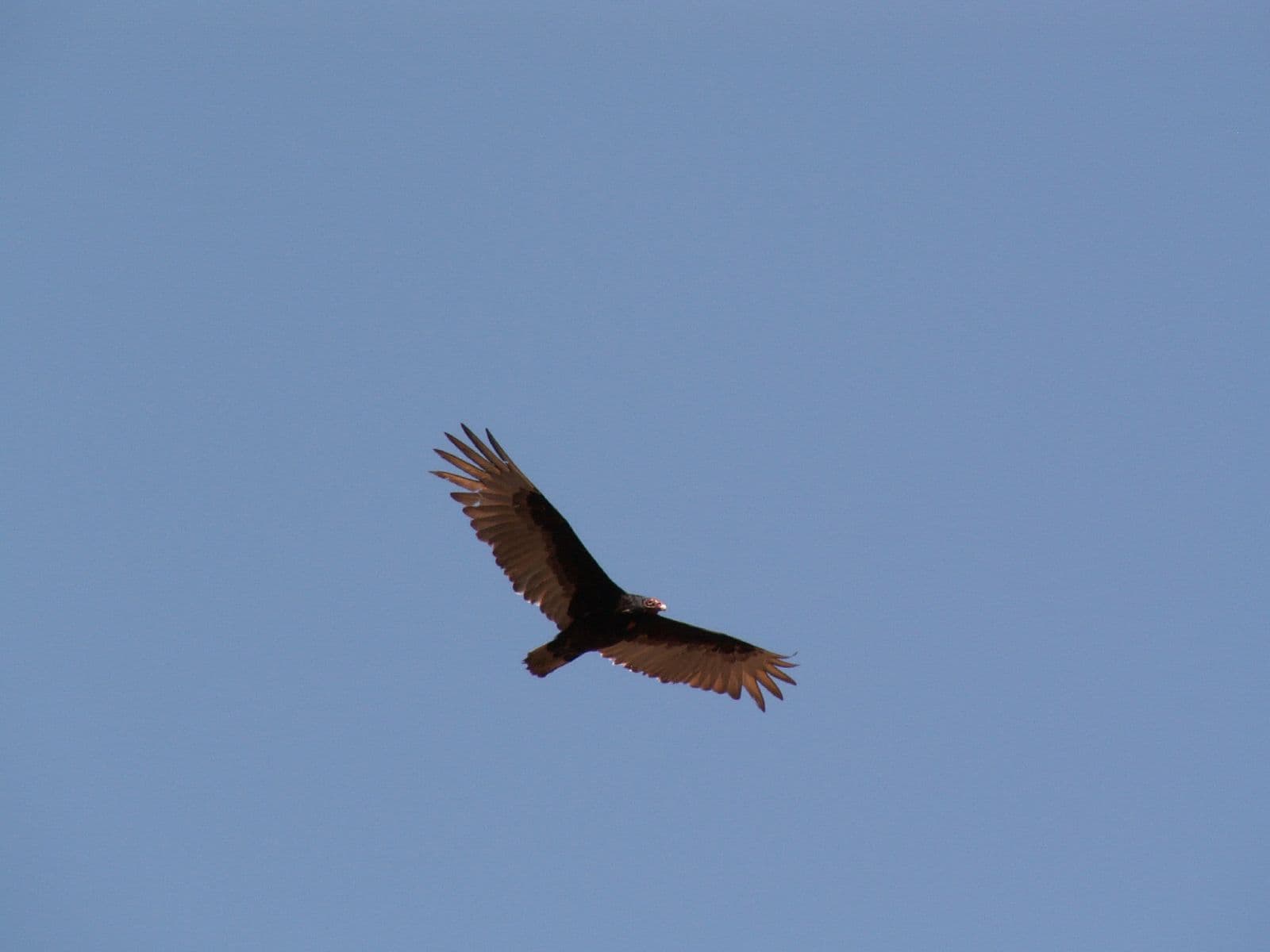Collection 4: Birds.Cindy and I have always loved birds, where-ever we have lived. We took turns taking these photos, never knowing when the right opportunity would arise.
A Red-tailed Hawk in flight
Key identifying features include its broad, rounded wings and the distinctive reddish-brown tail that gives the bird its name. I photographed this one soaring in wide circles around our home near Tuttle.
He Only Has Eyes For You
A male peacock displays his stunning tail feathers, each of which reflects light at specific wavelengths, producing vibrant iridescent blues and greens.
Great Egret
I captured this photo of an Egret flying by a statue of a boy sitting by the water. This was when we lived on Waterfront Drive in Tuttle.
Red Cardinal
This Northern Cardinal is a year-round resident of Oklahoma. Cardinals mate for life and unlike most North American songbirds, both males and females sing.
Mourning Dove
Outside our kitchen window at Grand Lake we placed a birdbath and several feeders. One day I saw this beautiful dove feeding on seeds fallen to the ground.
Three's Company
These Eastern Bluebirds came by for a drink and a bath. The male (with vivid royal blue head and back, and rusty red chest) is on the left, and two females are to his right. I was soooo happy to have photographed them!
Bald Eagle
Taking a break from fishing around our cove at Grand Lake atop a tall, dead Oak at the edge of a forest, this majestic creature I photographed with a pretty good-sized zoom lens.
Female Summer Tanagers
Since we lived next to an Oak forest, this species was never far. They feed mostly on insects, especially bees and wasps, which they skillfully kill by rubbing off the stinger before eating.
Following Mama
These Mallard ducklings can swim and feed themselves within hours of hatching. Cindy and I watched the mother (whom we thought was alone) in the grass near the pond, then suddenly all these ducklings popped up and followed Mom into the water.
He's a Long Way From Baltimore
Did you know this bird's range extends well beyond Maryland. It breeds across much of eastern and central North America, including Oklahoma, and migrates to Central America and northern South America for the winter.
Kissing Cardinals
Little did I know, when I snapped this photo, that male Cardinals often feed females beak-to-beak during courtship. Often this behavior looks like kissing.
Male Summer Tanager
The only entirely red songbird in North America, this male Summer Tanager pauses before a drink and a bath on a hot summer day near Grand Lake.
Yellow-Shafted Northern Flicker
Unlike most woodpeckers, Northern Flickers often feed on the ground, especially on ants and beetles. This one was feeding amidst the discarded acorn tops the squirrels left behind on the mossy forest floor in our front yard at Grand Lake.
Male Rose-breasted Grosbeak
On its way north, this beauty stopped by our birdbath. These melodious songbirds breed in the northeastern U.S. and Canada, migrate through the Midwest (including Oklahoma), and winter in Central and northern South America.
Is This Woody?
Red-headed Woodpeckers are known to store food (nuts, insects, even live grasshoppers) by wedging them into bark crevices or tree holes. Unlike many woodpeckers, it catches insects in flight.
Tufted Titmouse
Known for their excellent memory, they cache food (seeds, insects) and return to it later—often remembering hundreds of hiding places. Occasionally seen “anting”—rubbing ants or other arthropods on their feathers, possibly to apply formic acid as a pesticide or to condition feathers.

Turkey Vulture
Not a true vulture, it is named for its bald, red head, resembling a wild turkey. It’s a master glider, using thermals to stay aloft with minimal effort, often soaring for hours. Many times we would see them around Mount Scott.
American Robin - A True Early Bird
Males sing before dawn in spring and summer—some of the earliest risers in the bird world. They are super-efficient worm hunters. In winter they don't migrate, but instead form large nomadic flocks who roam rural woodlands and creek bottoms in search of hackberry, cedar, holly, and sumac—plants that retain their fruit well into winter.
Ring-necked Ducks
These ducks are powerful fliers that take off straight from the water, unlike most diving ducks that need a running start. Pictured on the pond behind our home in Tuttle.
Killdeer
Named for its loud, piercing “kill-deer!” call, these birds are known for their “broken-wing act”—feigning injury to lure predators away from its ground nest. They are bare-ground nesters, laying eggs in shallow scrapes on gravel, sand, or short grass—often with no lining or just a few pebbles.
Canada Geese
This species mate for life and are fiercely protective of their nest and their young. Parents guide them and protect against predators—using loud alarms, hissing, or even charging. Families stay tightly knit; goslings sleep under their parents’ wings at night.
Great Blue Heron
This graceful beauty hunts alone in shallow water, using a quick thrust of its sharp bill to spear fish, frogs, snakes, and even rodents. Despite standing up to 4.5 feet tall, they weigh only 5–6 pounds, thanks to hollow bones.
Harris’s Sparrow
This species breeds in the Canadian subarctic, and winters in the central U.S., including Oklahoma, where they are regular winter residents. Whenever I see a sparrow I always think of the song, "His Eye is On the Sparrow."
Day is Done
This Mallard Mama leads her brood hopefully to a safe shelter spot for the night. Birds don't live in houses like humans do. They weather every storm and every season outside, through good days and bad. And not one of them falls to the ground without Our Heavenly Father knowing. How much more, Jesus asked His disciples, does Our Father God care for us?
